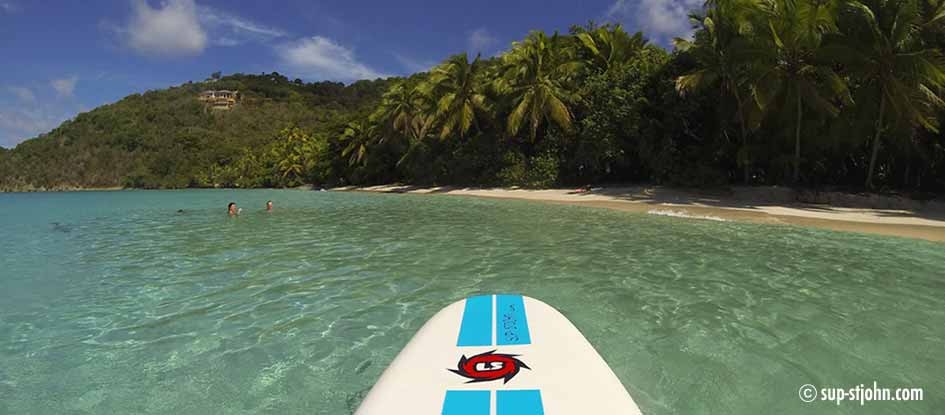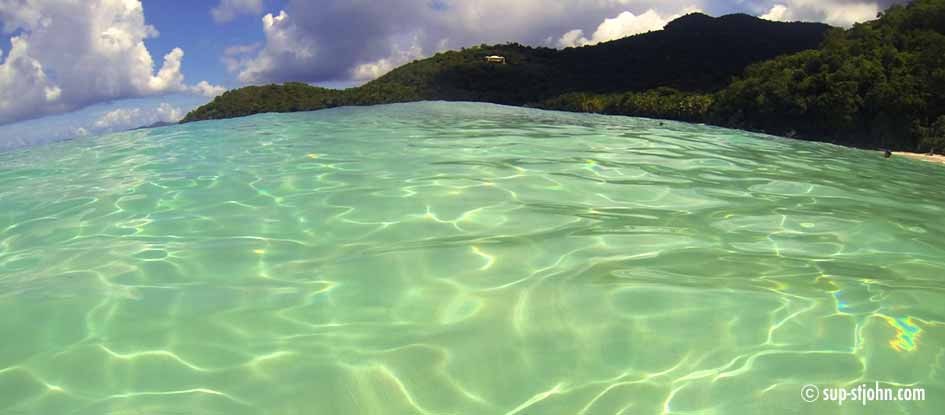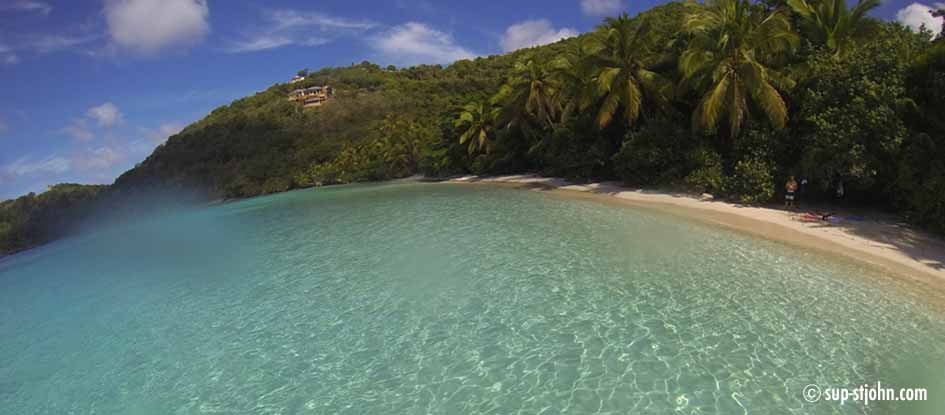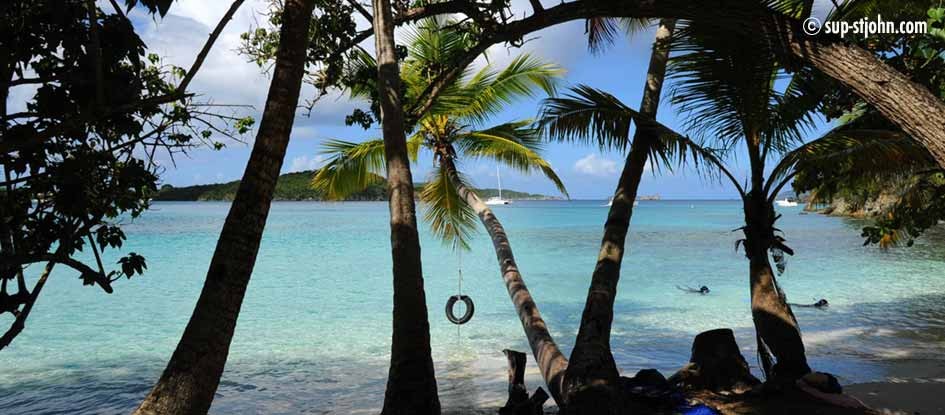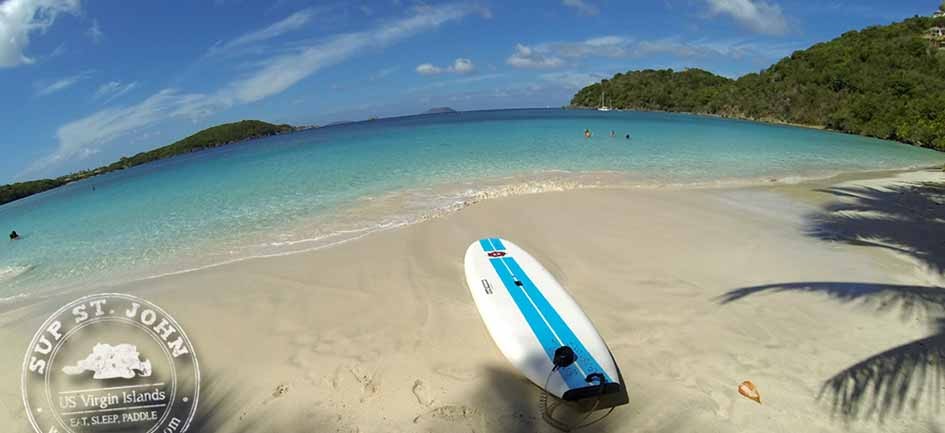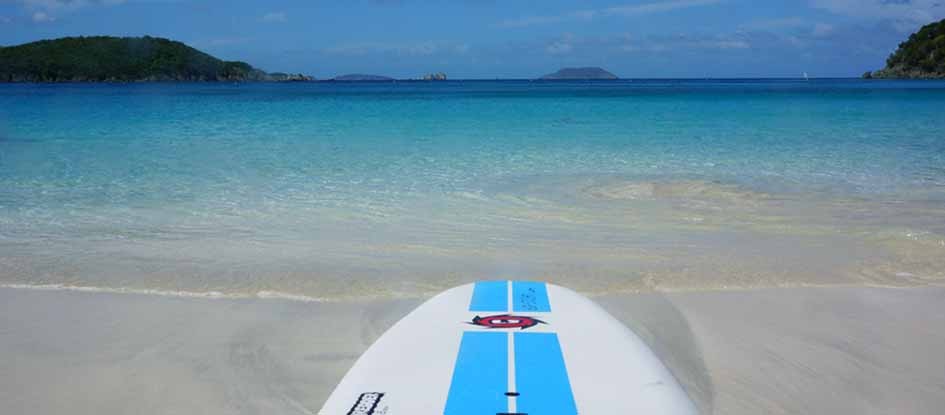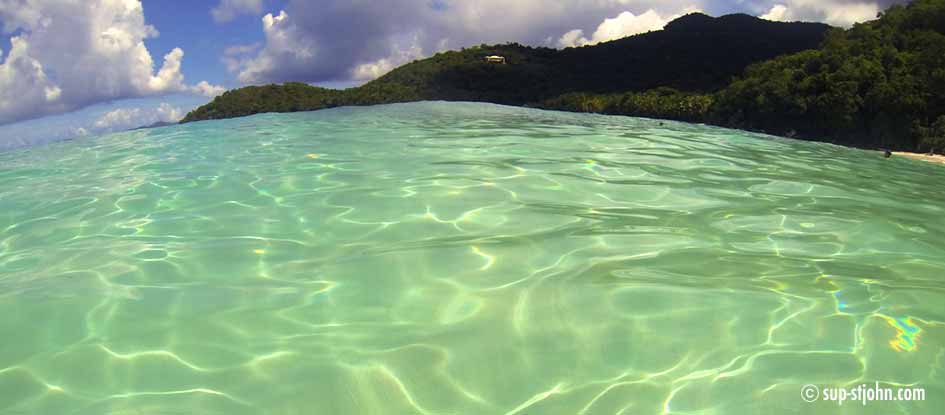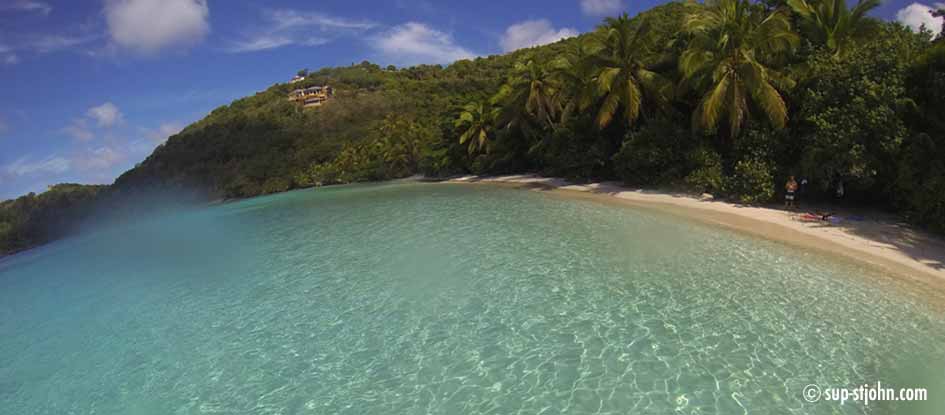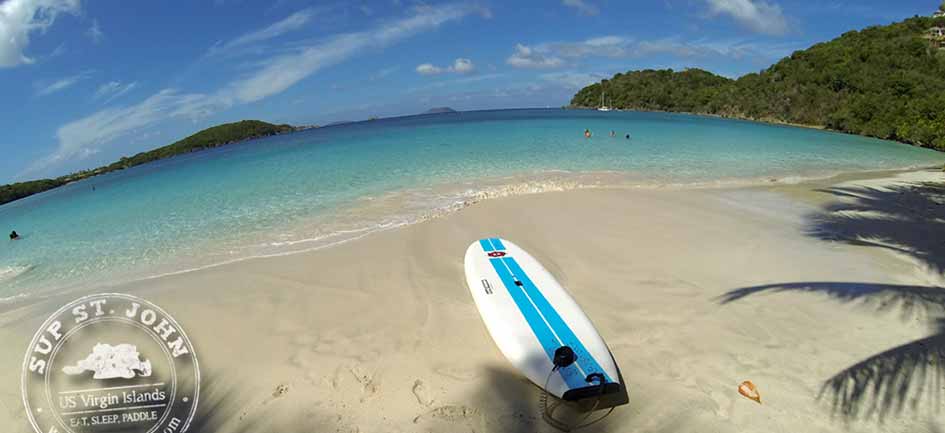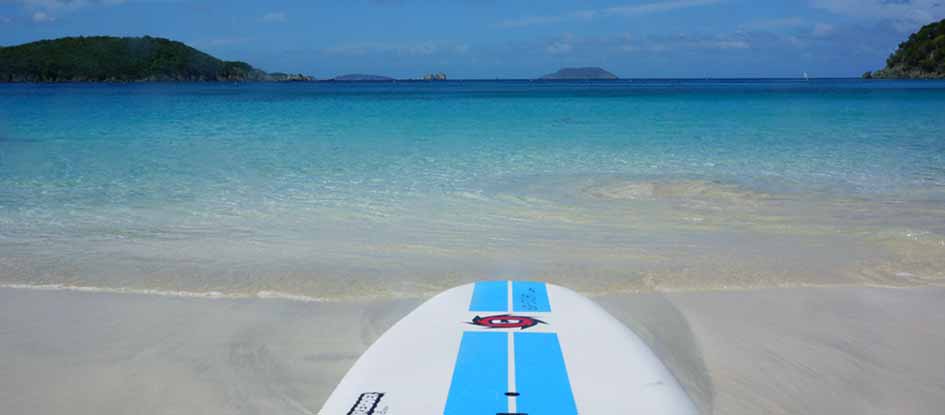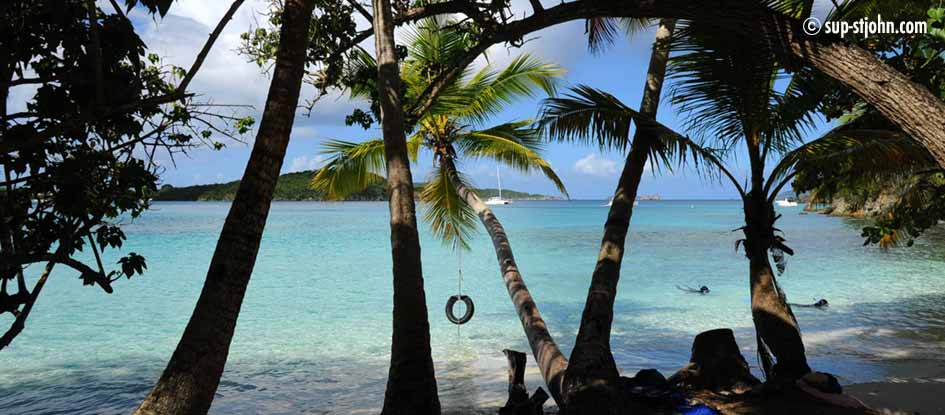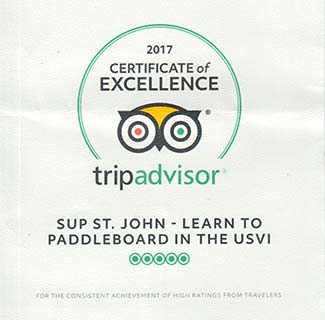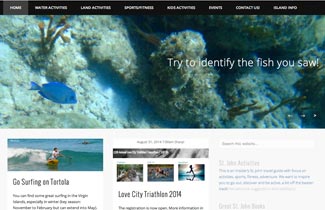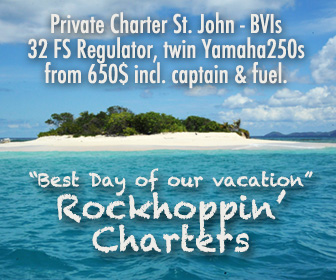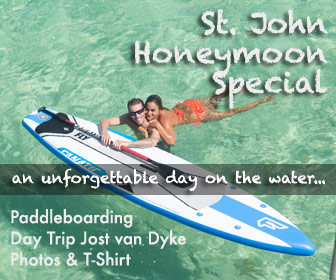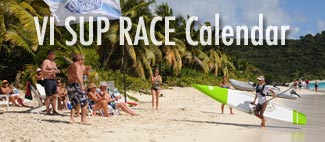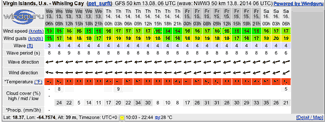Today’s Paddleboarding suggestions is a paddle from Hawksnest to Gibney / Oppenheimer Beach. This is a really easy paddle which also beginners and less athletic paddlers can do, unless it is really windy. The paddle starts at Hawksnest Beach on the North Shore Road.
Starting the paddle at Hawksnest
Take the North Shore Road past Caneel Bay and the next beach you will reach is Hawksnest, there is a big parking lot close to the water so you will not have to carry your boards far. Park at the rear end of the parking to minimize the distance you have to carry the board.
Look out onto the water and study the location of the 2 reefs. There are 2 reefs one to the left and one to the right. You can paddle out in between the two reefs or to the right of the second reef. When you paddle out, the water should look like this:
You want to see clear turquoise water with sand underneath. If you see brown / dark green that is the reef. Avoid paddling over it. Depending on the tide level the reef will be deep enough to paddle over, but you do not want to fall on the reef and hurt yourself or destroy Coral that took thousands of years to grow.
Head to the right around the rocky corner (which also has good snorkeling) and you will see a beautiful sandy bay with coconut tree backdrop. The part to the right is called Gibney Beach, the part to the left is called Oppenheimer Beach.
Gibney Beach St. John, USVI
The beach is named after Gibney family from New York .who came to St John in the mid 1940’s. Robert was a writer-artist and friend of Thomas Merton; Nancy was a magazine editor. A few years later they rented a home on Denis Bay – just around the point from their current home. In 1950 the Gibneys bought fourty acres along Hawksnest Bay.
The original 40-acre (160,000 m2) parcel of land purchased by the Gibneys has been divided and sold in a number of ways through the years. Some of the beach area is now part of the Virgin Islands National Park. A small piece of land, on the far northeastern section of the beach, was sold in 1957 to J. Robert Oppenheimer. Today, Gibney Beach is home to the Gibney Beach Villas, so that land behind the treeline / high water line is private but all beaches are public. Since access from land is difficult you might have that beach to yourself.
Oppenheimer Beach
You might have seen photos of people sitting on an old tire dangling off a tree. That would be Oppenheimer Beach, it the second/left part of the beach looking from the water)
Robert Oppenheimer, the “Father of the atomic bomb” had purchased a small parcel of land from the Gibney and built himself, his wife and daughter a small home that still stands. After their death, the Oppenheimers left the land to their daughter, Toni. Toni died in 1976 and left the property to “the people of St. John”. The land is now a public park. The “people of St. John” did not attend to the responsibilities left by this gift, and the house was vandalized and covered with graffiti. It soon fell into disrepair. Finally, the United States Virgin Island government took over the property, and created a Community Center on the property. Now, the center can be rented out by paying a small fee for such events as senior citizen outings, Boy Scouts meetings, local reggae and calypso bands, picnics, weddings, and birthday parties.
Snorkeling Oppenheimer / Gibney Beach
Source: St. John Beach Guide
Snorkeling is best along the eastern side – in front of Oppenheimer Beach. The shallow reef just off the beach is recovering from destruction inflicted during the construction of the Myrah Keating Smith Community Health Center – high up on the ridge above Hawksnest Bay. Construction runoff caused significant damage to a once impressive reef. Fortunately the corals, sea fans and marine life are returning. Continue on along the shoreline in about 8′ to 15′ of water and the overall health of the reef increases dramatically. You’ll see a wide variety of Tangs, wrasses and snapper as well as established brain corals, sea fans, gorgonians, elkhorn and fire coral
